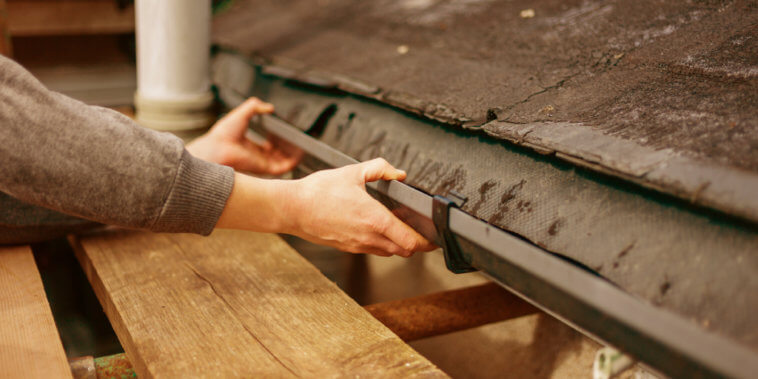Repair Gutters – Tips on keeping your gutters properly maintained to protect your house
Gutters play a vital role in protecting your home from water damage by directing rainwater away from the roof and foundation. However, over time, gutters can become clogged, damaged, or inefficient, compromising their functionality. To safeguard your house, it's crucial to keep your gutters properly maintained.
In this comprehensive guide, we will provide you with essential tips and techniques to repair and maintain your gutters effectively. From regular cleaning to fixing leaks and sagging, we'll cover everything you need to know to ensure your gutters are in optimal condition.
Importance of Properly Maintained Gutters
Properly maintained gutters are essential for protecting your house from water damage. Here's why:
- Preventing Foundation Damage: Gutters direct rainwater away from the foundation, preventing soil erosion and potential foundation cracks or shifting.
- Preserving Siding and Exterior: By channeling water away, gutters prevent water stains, rot, and damage to the siding, fascia, and exterior walls of your home.
- Avoiding Basement Flooding: Well-maintained gutters prevent excess water from pooling around the foundation, reducing the risk of basement flooding.
- Preventing Landscape Erosion: By directing water away from your landscaping, gutters protect against soil erosion and damage to plants, flowers, and walkways.
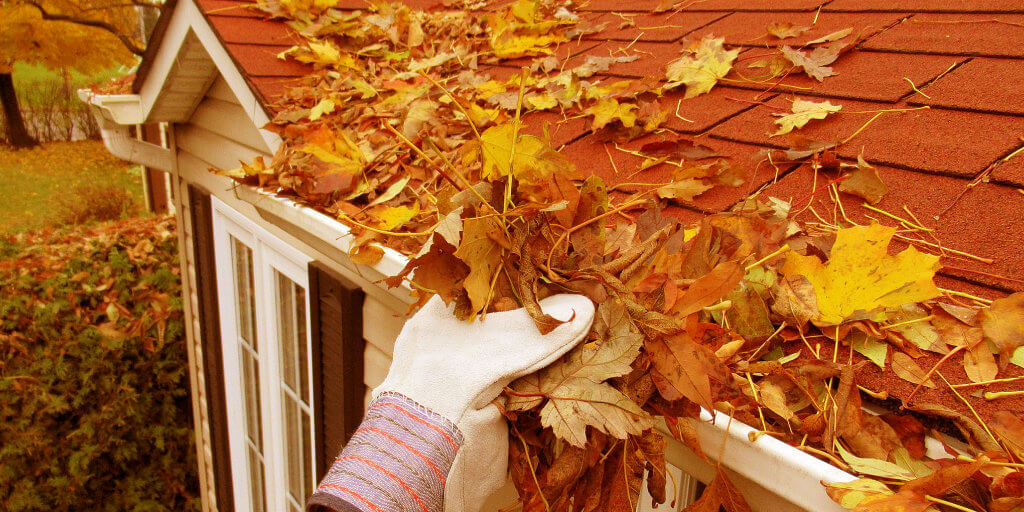
Signs of Gutter Damage
It's crucial to keep an eye out for signs of gutter damage to address issues promptly. Look for the following indicators:
- Overflowing Gutters: If water overflows from the gutters during rain, it suggests a clog or improper water flow.
- Sagging or Pulling Away: Gutters that sag or pull away from the roofline may indicate insufficient support or damage to the fascia board.
- Water Stains or Mildew: Notice water stains or mildew on the exterior walls or underneath the gutters? This could indicate a leak or poor drainage.
- Puddles or Erosion: If you notice puddles or signs of erosion around the foundation or landscaping, it could signify improper water diversion.
If you observe any of these signs, it's essential to take action to repair and maintain your gutters promptly.
Regular Gutter Cleaning
Regular cleaning is crucial to keep your gutters free from debris and ensure proper water flow. Follow these steps for effective gutter cleaning:
Tools and Equipment Needed
- Ladder: Choose a sturdy ladder that reaches the height of your gutters. Ensure it's placed on a stable surface.
- Gloves and Safety Gear: Wear heavy-duty gloves to protect your hands from debris and consider safety glasses and a dust mask.
- Garden Hose: Use a garden hose with a nozzle attachment to flush out debris and check for proper water flow.
- Gutter Scoop or Trowel: Use a gutter scoop or small trowel to remove leaves, twigs, and other debris from the gutters.
- Bucket or Tarp: Place a bucket or tarp near the base of the ladder to collect debris or use it to dispose of gutter waste.
Step-by-Step Cleaning Process
- Safety First: Ensure you have proper safety gear and a stable ladder before starting the cleaning process.
- Remove Large Debris: Use a gutter scoop or trowel to scoop out large debris from the gutters, placing it in a bucket or tarp.
- Flush with Water: Use a garden hose to flush out remaining debris, starting from the end opposite the downspout. Check for proper water flow.
- Inspect and Clear Downspouts: Check the downspouts for clogs and clear them by using a plumber's snake or running water through them.
- Check for Leaks and Damage: While cleaning, inspect the gutters for leaks, rust, or any signs of damage. Make a note of areas that require repair.
Gutter Cleaning Frequency
For most homes, it's recommended to clean the gutters at least twice a year – once in the spring and once in the fall. However, if your property has overhanging trees or experiences heavy rainfall, more frequent cleanings may be necessary.
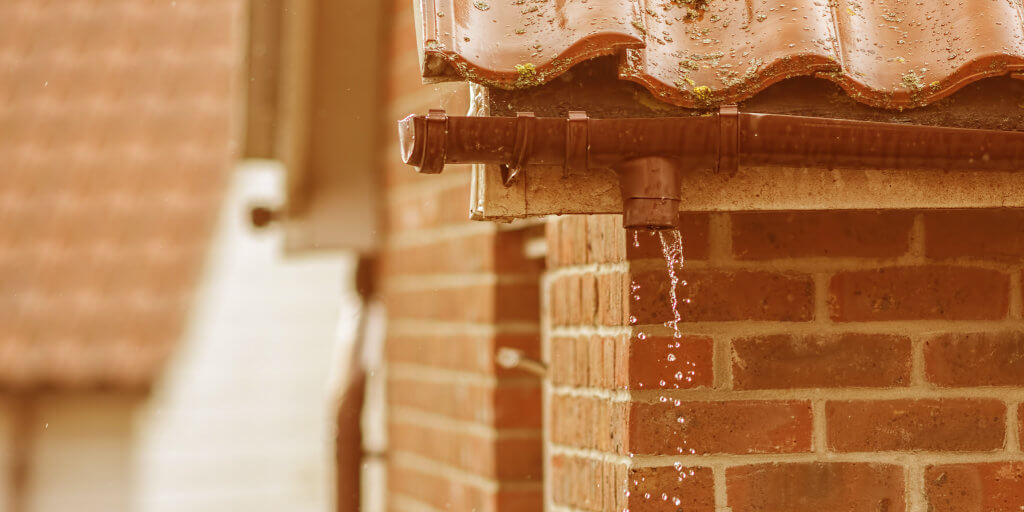
Repairing Leaking Gutters
Leaking gutters can cause water damage to your home's exterior and foundation. Here's how you can repair leaks:
Identifying Leaks
- Inspect during Rain: Check for leaks by observing the gutters during a rainfall. Note any areas where water drips or flows out.
- Inspect Dry Gutters: On a dry day, run water through the gutters with a hose and check for leaks. Take note of areas that require attention.
Patching Small Leaks
- Clean and Dry: Ensure the affected area is clean and dry before applying any patching material.
- Apply Sealant: Use a gutter sealant or silicone caulk to seal small leaks or cracks. Follow the manufacturer's instructions for application.
Replacing Damaged Sections
- Measure and Remove: Measure the damaged section of the gutter and carefully remove it using a hacksaw or tin snips.
- Replace with New Section: Install a new gutter section, ensuring it aligns properly with the existing gutters. Use gutter connectors and screws to secure it in place.
- Seal Joints: Apply gutter sealant or silicone caulk to the joints to prevent future leaks.
By addressing leaks promptly, you can protect your home from water damage and ensure the efficiency of your gutters.
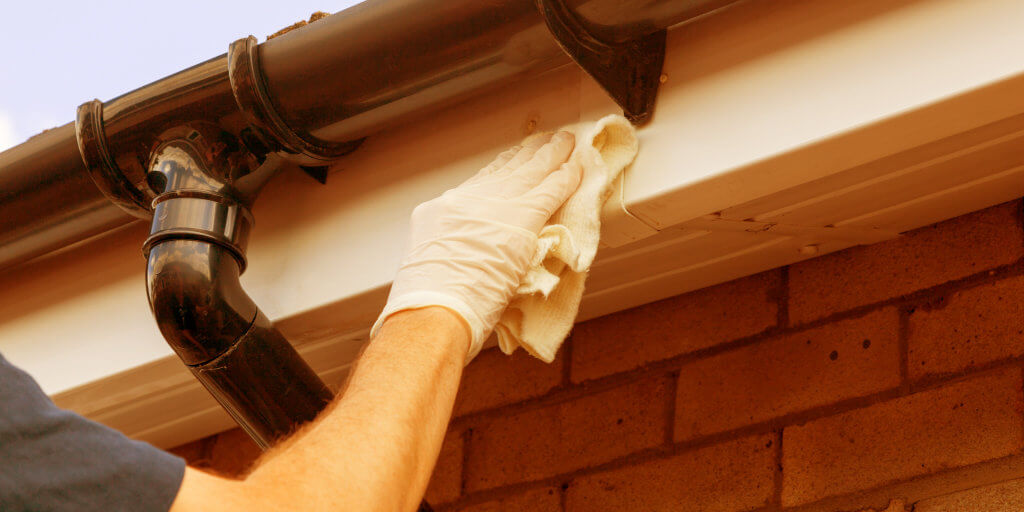
Fixing Sagging Gutters
Sagging gutters can impede proper water flow and compromise the overall functionality of your gutter system. Follow these steps to fix sagging gutters:
Causes of Sagging Gutters
- Insufficient Support: The gutters may lack proper support due to loose or damaged hangers or brackets.
- Heavy Debris: Accumulated debris and clogs can put excessive weight on the gutters, causing them to sag.
Reinforcing Gutters with Hangers
- Identify Problem Areas: Determine the areas where the gutters are sagging or pulling away from the fascia.
- Install New Hangers: Install new gutter hangers or brackets at regular intervals, ensuring they are securely fastened to the fascia board.
- Adjust Slope: Use a level to ensure the gutters have a slight slope towards the downspouts for proper water flow.
Adjusting Slope for Proper Water Flow
- Assess Current Slope: Check the slope of the gutters by pouring water into them. Adjustments may be necessary if water pools in certain areas.
- Reposition Hangers: If needed, reposition hangers or brackets to adjust the slope of the gutters. Use a level to ensure they are correctly angled.
- Test with Water Flow: After making adjustments, run water through the gutters to ensure the water flows smoothly towards the downspouts.
By fixing sagging gutters and ensuring proper water flow, you can prevent water damage and maintain the effectiveness of your gutter system.
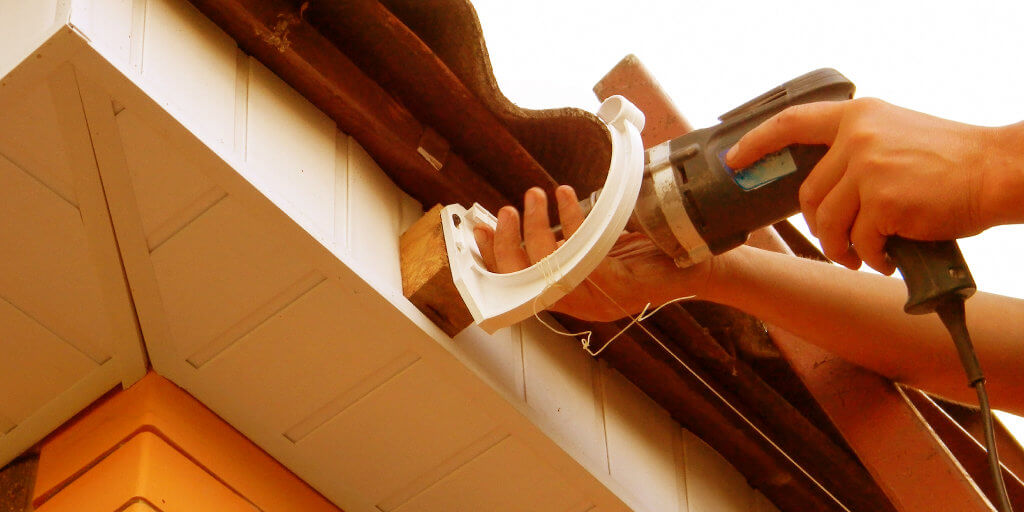
Preventing Clogging
Clogged gutters can cause water to overflow, leading to potential water damage. Take these preventive measures to minimize clogging:
Installing Gutter Guards
- Gutter Screens: Install gutter screens or mesh covers to keep leaves and debris out while allowing water to flow freely.
- Gutter Brushes: Use gutter brushes that fit inside the gutters to prevent the buildup of debris.
Trimming Overhanging Branches
- Tree Maintenance: Trim tree branches that hang over or near the roof to prevent leaves and twigs from falling into the gutters.
Flushing Gutters and Downspouts
- Routine Flushing: Regularly flush out your gutters and downspouts with a hose to remove smaller debris and ensure proper water flow.
By taking these preventive measures, you can minimize the risk of clogging and ensure the continuous functionality of your gutters.
Inspecting and Maintaining Downspouts
Downspouts are crucial for directing water away from your home's foundation. Here's how to inspect and maintain them:
Clearing Debris
- Check for Blockages: Inspect the downspouts for blockages by visually inspecting and using a plumber's snake to remove debris.
- Flushing with Water: Run water through the downspouts to ensure they are clear and draining properly.
Repairing or Replacing Damaged Downspouts
- Patch Leaks: Use gutter sealant or silicone caulk to seal small leaks or cracks in the downspouts.
- Replace Damaged Sections: If the downspouts are severely damaged, measure and replace the damaged sections using appropriate connectors.
Regular inspection and maintenance of downspouts will ensure effective water drainage and prevent potential water damage.
Extending the Life of Your Gutters
To prolong the lifespan of your gutters and maintain their optimal functionality, follow these tips:
Regular Inspections
- Schedule Routine Inspections: Conduct visual inspections of your gutters at least twice a year to identify any signs of damage, leaks, or clogs.
- Address Issues Promptly: If you notice any problems during inspections, such as loose hangers or leaks, take immediate action to repair or replace affected areas.
Professional Maintenance Services
- Consider Professional Cleaning: Engage professional gutter cleaning services if you are unable to safely clean your gutters or prefer professional assistance.
- Periodic Check-ups: Schedule periodic professional inspections to ensure your gutters are in good condition and functioning properly.
Winter Preparations
- Remove Debris: Clean your gutters thoroughly in late fall to remove leaves and debris that can cause clogs during winter months.
- Prevent Ice Dams: Install heating cables or roof de-icing systems to prevent ice dams from forming, which can damage gutters.
By implementing these measures, you can extend the life of your gutters and minimize the risk of water damage to your home.
Conclusion
Properly maintaining your gutters is crucial for protecting your house from water damage. Regular cleaning, repairing leaks, fixing sagging gutters, preventing clogs, and inspecting downspouts are essential tasks to ensure the optimal functionality of your gutter system. By following the tips and techniques outlined in this guide, you can safeguard your home and maintain the integrity of your gutters for years to come.


